Avocados
Credit: Biovision-Infonet

Ⓒ A.A. Seif, icipe
1. Geographical Distribution in Africa
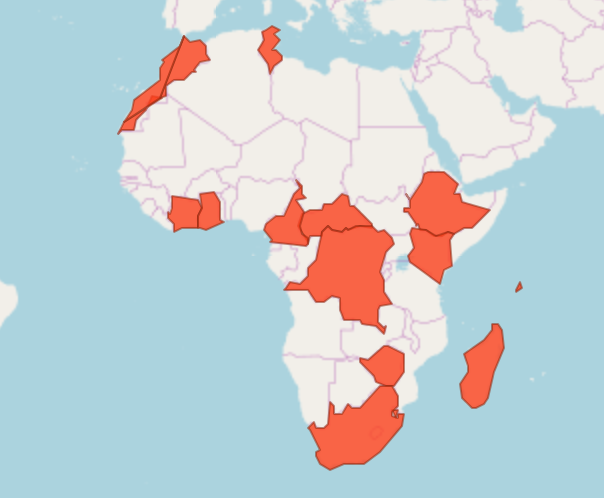
2. General Information and Agronomic Aspects
The avocado is native to the Americas but grows well in Kenya. It is very nutritious with a high protein and oil content and is becoming increasingly important as an export crop.
The avocado oil is cholesterol free, of the monounsaturated type believed to protect against heart disease and certain kinds of cancers. The fruit is nearly sodium free, is rich in potassium dietary fibre and vitamin B6, C, D and E. It is eaten as fresh fruit, in salads, soups, ice cream, also used to make avocado oil, perfume and avocado paste.
Climatic conditions, soil and water management
Depending on variety, avocado grows well from 0-2100 m above sea level (asl). The varieties ‘Tonnage’, ‘Simmonds’, ‘Booth 7&8’ are suited to lowland areas between 90 and 800 m asl. ‘Hass’ and ‘Nabal’ are suited to altitudes 800-2100 m asl. ‘Fuerte’ and ‘Puebla’ are suited to altitudes 1500-2100 m asl.
Avocado grows successfully on many types of soil provided they are deep, with good water holding capacity and free draining. Water logged or saline soils are unsuitable because avocado plants are sensitive to excessive soil moisture and high salinity. The optimum pH is 5.5-6.5. Temperatures between 16 and 24degC are good for growing avocados. Maximum temperature for avocado is 33degC. Above this temperature avocado fruits and trees can be damaged. High temperatures and direct sunshine can cause sunburn damage to exposed fruit. Avocado will not grow where frost can occur. An annual rainfall 1200 mm is optimal for good production. Water requirements are not less than 1000 mm/year. If supplementary water is required not more than 50 mm at a time may be applied. Climatic conditions with alternating dry and rainy seasons are best for avocados.
Varieties
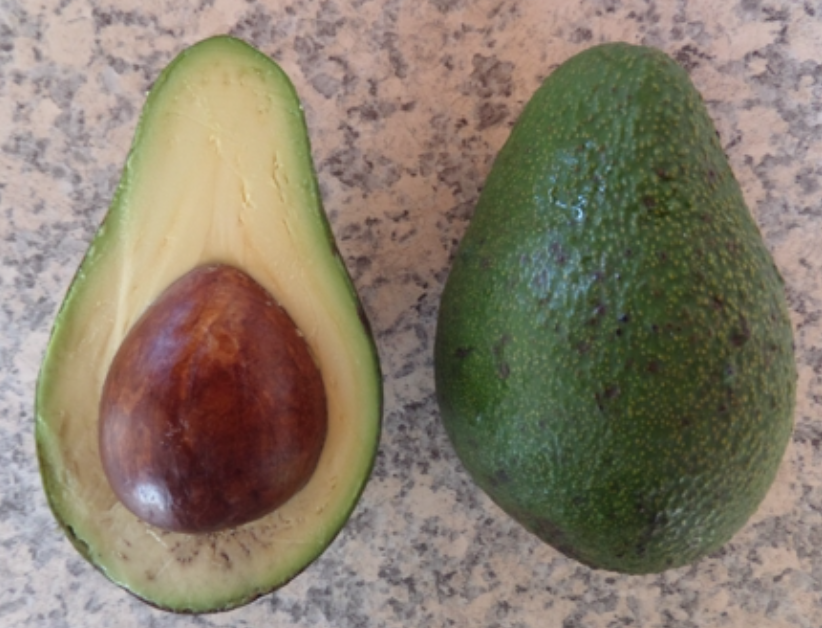
- ‘Fuerte’. Hybrid of Guatemalan and Mexican races with thin skinned green-pebbled fruit of very good flavour. This variety has many lines with different shapes; the pear shaped fruit is preferred in the export market. Matures 6-8 months after flowering.
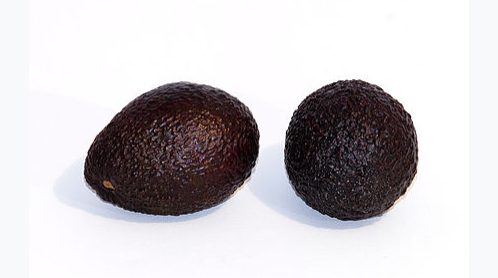
- ‘Haas’. Vigorous grower and bears medium-sized, rounded, rough-skinned, black fruits. Propagates well. Matures 8-9 months after flowering.
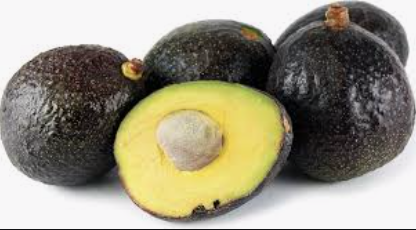
- ‘Nabal’. Bears fruit in alternate years. Its green fruits have a good flavour. Matures 8-9 months after flowering.
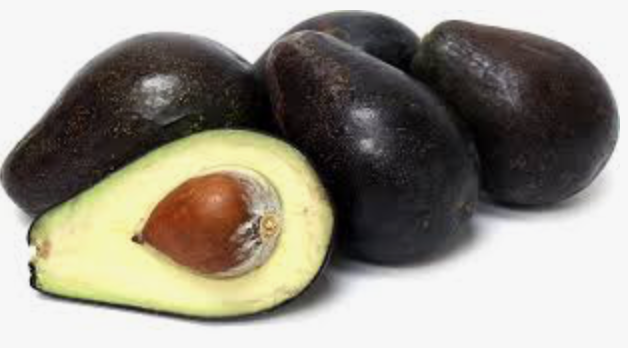
- ‘Puebla’. Spreading, dark green tree bearing deep purple to maroon round fruit. This variety is normally used as a rootstock. Matures 5-7 months after blossoming.
- Others: ‘Reed’, ‘Simmonds’, ‘Booth 7&8’, ‘Pinkerton’, ‘Bacon’, ‘Lula’ and ‘Taylor’
‘Furte‘ is the main variety grown in Kenya.The variety ‘Haas‘ is developing strongly, especially among small growers.These two varieties are grown for the export market.Other varieties (‘Reed’, ‘Booth 8’, ‘Puebla’, ‘Pinkerton’,’Simmond’,etc) are grown but not exported ( Mugambi 2002)
Propagation and planting
Select healthy, egg sized seeds and plant them in boxes or seedbeds. Immediately after germination transplant the seedlings into 4 litre pots, tins or polythene bags. Water them regularly until they are pencil thick. Grafting should be carried out when the seedling reaches pencil thickness. Wedge grafting method is most successful. Grafting should be done at the point where rootstock is soft. The scion should be dormant at the time of grafting and should match the size of the stock. Wrap the grafting point thoroughly to exclude water from the union and to prevent it from drying out.
Land preparation
The fields should be cleaned by removing tree stumps, bushes and perennial weeds. Then the land should be mowed or cultivated.
Planting out
Generally a spacing for pure stands of avocadoes of 9m x9m will be suitable. Dig holes of 60cmx60cm by 60cm deep keeping the top soil and the sub soil separate. Mix the top soil with 1 bucket (20 litre) of well rotted manure or compost and 1-2 handfuls of Mijingu rock phosphate. Remove the plant from its pot keeping the root and soil structure intact (easiest if it has been properly wetted ahead of time) and plant out using only the topsoil mixture to fill the hole.
The subsoil may be used to make a basin around the tree. Water the seedlings immediately after planting if it is not in the rainy season. Shade the young plants with banana leaves or similar material after planting and when they are putting up a new flush. If planted in a windy area, a windbreak will be necessary to protect the plants from leaning to one side and to help prevent leaf shedding fruit drop and bruising.
Manuring
One avocado tree can yield 250-300 kg of fruit per harvest season. This causes a high demand on soil nutrients. To determine the right amount of manure to apply the soil should be tested annually, otherwise the following info can be used as a guide for organic farmers for yearly manuring individual trees:
Age of tree (years):1-3
Nitrogen and potassium
Litres animal urine mixed 1:4 with water in split applications: 8 lt Mijingu rock phosphate:500 g Additional potassium Ashes (handfuls): 0 Manure or compost decomposed: 15 Kg
Age of tree (years):4-5
Nitrogen and potassium
Litres animal urine mixed 1:4 with water in split applications: 16 lt Mijingu rock phosphate:900 g Additional potassium Ashes (handfuls): 0 Manure or compost decomposed: 15 Kg
Age of tree (years):6-7
Nitrogen and potassium
Litres animal urine mixed 1:4 with water in split applications: 30 lt Mijingu rock phosphate:1.4 Kg Additional potassium Ashes (handfuls): 1 Manure or compost decomposed: 30 Kg
Age of tree (years):8-9
Nitrogen and potassium
Litres animal urine mixed 1:4 with water in split applications: 46 lt Mijingu rock phosphate:1.4 Kg Additional potassium Ashes (handfuls): 2 Manure or compost decomposed: 30 Kg
Age of tree (years):10-14
Nitrogen and potassium
Litres animal urine mixed 1:4 with water in split applications: 60 (three 20 litre buckets/year, mixed with 12 buckets of water, divided into several applications) Mijingu rock phosphate: 2 Kg Additional potassium Ashes (handfuls): 4 Manure or compost decomposed: 30 Kg
Age of tree (years):15+
Nitrogen and potassium
Litres animal urine mixed 1:4 with water in split applications: 80 (four 20 litre buckets/year mixed with 16 buckets of water, divided into several applications Mijingu rock phosphate: 2.5 Kg Additional potassium Ashes (handfuls): 8 Manure or compost decomposed: 30 Kg
Adapted from AIC advice for conventional farmers replacing conventional fertilisers with natural products to get the same amount of nutrients.
If chicken manure is available, it can be used instead of animal urine as follows, but spread on top of the soil far enough from the tree stem to avoid burning the stem:
Age of tree (years): 1-3
Chicken manure Kg/tree/year: 1.5 Additional Mijingu Rock phosphate: 150 g Additional potassium Ashes – (handfuls) 0 Compost decomposed:15 Kg
Age of tree (years): 4-5
Chicken manure Kg/tree/year: 3 Additional Mijingu Rock phosphate: 300 g Additional potassium Ashes – (handfuls)0 Compost decomposed:15 Kg
Age of tree (years): 6-7
Chicken manure Kg/tree/year: 6 Additional Mijingu Rock phosphate: 450 g Additional potassium Ashes (handfuls) – 1 Compost decomposed:30 Kg
Age of tree (years): 8-9
Chicken manure Kg/tree/year: 9 Additional Mijingu Rock phosphate: 450 g Additional potassium Ashes (handfuls) – 2 Compost decomposed:30 Kg
Age of tree (years): 10-14
Chicken manure Kg/tree/year: 12 Additional Mijingu Rock phosphate: 800 g Additional potassium Ashes (handfuls) – 4 Compost decomposed:30 Kg
Age of tree (years): 15+
Chicken manure Kg/tree/year: 15 Additional Mijingu Rock phosphate: 1 Kg Additional potassium Ashes (handfuls) – 8 Compost decomposed:30 Kg
Trace elements: In spite of heavy applications of manures and compost, deficiencies may occur in avocado orchards. Usually these are seen as various degrees of discolouration. Accurate analysis can be made from plant analysis laboratories. The following list can be used as a guideline:
Mineral: Zinc
Symptom: Mottled leaves with light yellow areas between the veins and abnormal development of growing shoots Control: Apply 250 g zinc sulphate for each year of age to a maximum of 4.5 kg/tree. The application should be done in a 60 cm circle around the tree
Mineral: Manganese
Symptom: Progressive yellowing of the margins and interveinal parts of the leaves while the veins remain green Control: Spray the young leaves with foliar spray of manganese sulphate
Mineral: Iron
Symptom: Loss of green colour in leaves Control: Apply 360 g iron chelate per tree in acid soils. In normal soils 250 g of iron sulphate in 10 l of water/per tree will correct iron deficiency
Mineral: Chlorine
Symptom: High concentration of chlorine in the soil may cause leaf burn, also damage the root system Control: Apply lime and compost to neutralise the chlorine.
Pruning
Initial pruning may be done to give the tree a good shape. Otherwise pruning is limited to the removal of dead wood and parasitic plants.
- Remove all sucker and dead branches from main trunk branches.
- Prune canopy to keep the tree to a height of 5-8 m and for ease of picking. The tree is very susceptible to sunburn, therefore pruning should be minimised.
- Prune the larger tree roots by cultivating to a depth of 50 cm around the edge of the tree canopy.
The area around the tree should be kept clean by weeding and removal of all fallen fruits.
Harvesting
Harvesting starts at 3-4 years from planting but a good yield is obtained from the 6th year onwards. It is not easy to tell when the fruits are ready for harvesting unless they are of the varieties that change colour at maturity. Harvest a sample and keep at room temperature. If they soften within 7-10 days without shrivelling then the fruit of that age are ready for harvesting.
